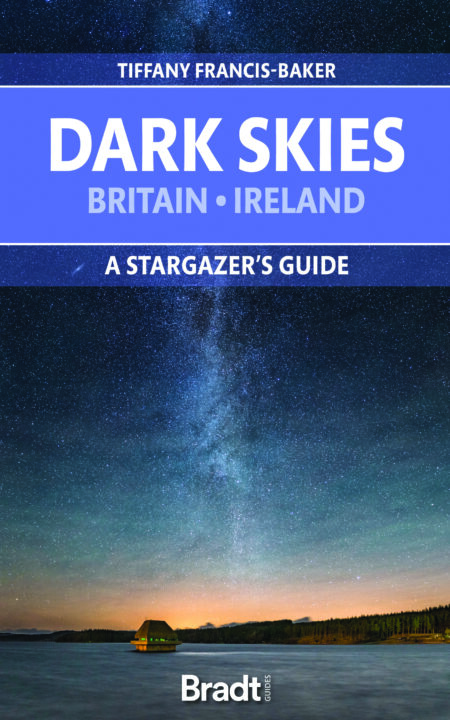It’s incredible how many people think of visiting a destination as a dawn-to-dusk-only experience. Visit the Cambrian Mountains and you’ll find that there’s more than meets the eye after sunset, too.
Positioned conveniently at the geographic centre of Wales, the Cambrian Mountains is an area of astounding natural beauty, full of open spaces and welcoming places. With each day spent here you’ll feel closer to nature; each night you’ll feel closer to the stars, as after sunset a whole new world appears – a blackened sky full of white dots.
This part of Wales has extremely dark skies. A recent Welsh Government report confirmed that 99% of the Cambrian Mountains landscape has the highest level of darkness in the whole country, ie: extreme low light pollution. Long may this figure remain.
It’s true that, as Neil Armstrong once said, stargazing is not just for astronomers, astronauts and astrophysicists. Indeed, anybody can stand in awe under the Cambrian Mountains night sky. Recently, the local communities here have collaborated on a project that celebrates the night sky, creating the Cambrian Mountains Astro Trail. Just as stargazers may join up those celestial white dots in the night sky, the communities have joined up with the aim of providing great night-time experiences for locals and visitors alike.
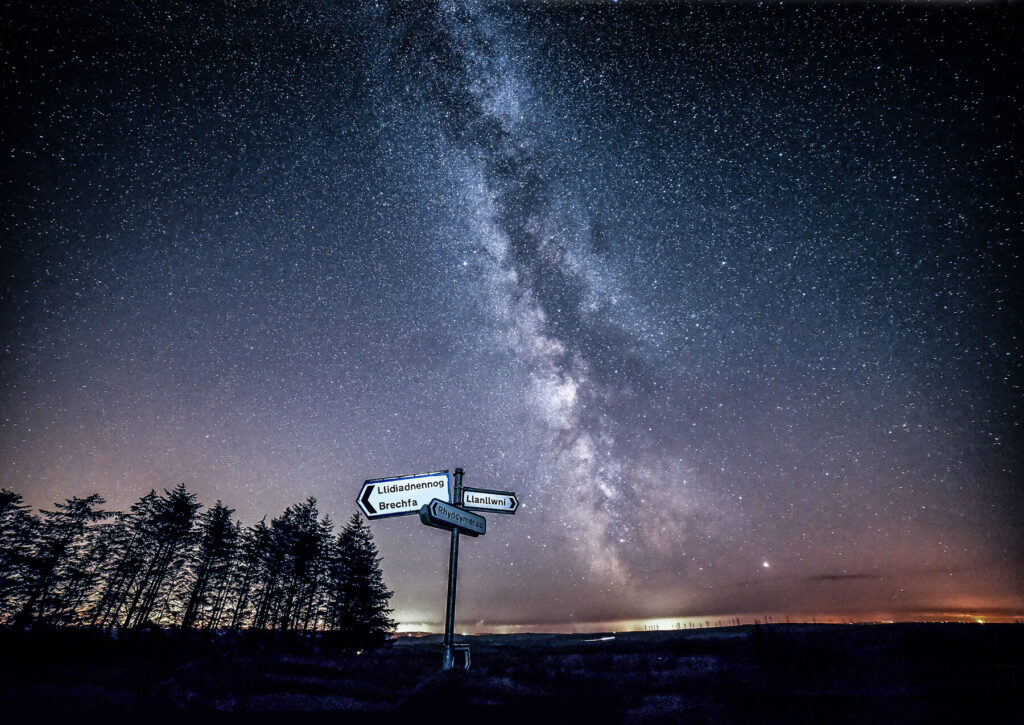
The trail offers accessible venues from where to view world-class dark skies. Many are amazing places to visit by day, such as community woodlands and scenic viewpoints providing panoramic views of the landscape as far as the eye can see. There are also plenty of family-run cafés, tearooms, pubs and restaurants conveniently positioned near the trail. However, once twilight turns into truly dark skies, the greatest show from earth awaits.
At the core of the constellation of Dark Sky Discovery Sites that form the Cambrian Mountains Astro Trail is the Elan Valley International Dark Sky Park. By day, visit a series of reservoirs to fully appreciate an incredible feat of Victorian engineering set in an incredible landscape – truly mindblowing. At night, the landscape here takes on a different character altogether. Like a chameleon, it transforms from a big green space into a super black canvas, sprinkled with stars, planets, and galaxies. You can observe how the natural world comes alive as glow worms, bats, owls and pine martens strut their stuff under the night sky. It’s this transformation that allows the visitor to take full advantage of the area as a 24/7 destination.
Indeed, my favourites of the area’s stargazing spots are mostly on the Cambrian Mountains Astro Trail. I love visiting the Llanllwni Mountain area near Brechfa. Not only is this place great for stargazing, but it’s also a great spot from where to watch the sunset, and there are also a variety of mountain-bike trails available at nearby Brechfa Forest. One of the darkest places I’ve visited is the volunteer-run Dolgoch Hostel site near the source of the River Tywi. Indeed, some nights I’ve spent here have been so dark that I haven’t been able to see my own hands. One of my favourite night-time photos was taken here, and features on the cover of the recently published Dark Sky Guide to the Cambrian Mountains and the Elan Valley.
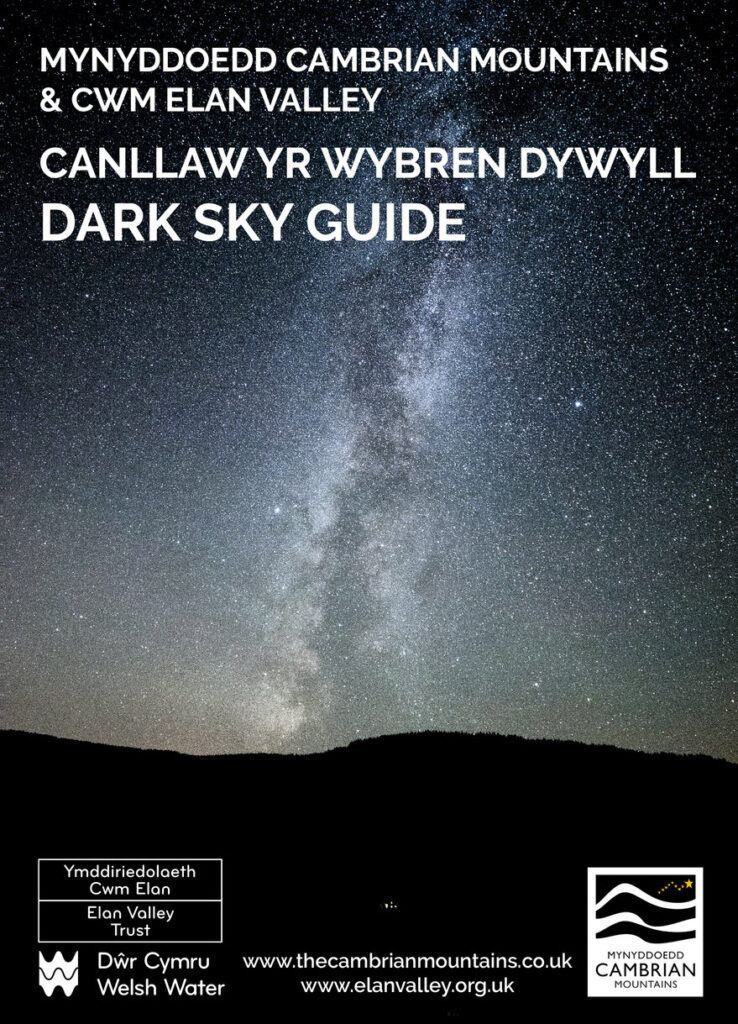
Veer off the astro trail and you’ll find even darker skies. I highly recommend hiking round the base of the highest peak in the Cambrian Mountains, Pumlumon Fawr (2,468ft), finding a quiet spot to watch the passing movement of the Milky Way. Next to the shore of the Nant-y-Moch Reservoir you’ll hear a variety of nocturnal sounds – Canada geese calling in the distance, or the cough of a fox as it tracks a scent across the adjoining moorland. Every now and again you’ll feel the flutter of a bat’s wings above, as it follows its ultrasonic wave systems using echolocation.
Even world-renowned night-time landscape photographer Alyn Wallace is a supporter of all things Cambrian Mountains. His amazing photography has inspired tens of thousands to appreciate, and understand the beauty of, the night sky. In 2018 he created a compilation video that really put the Cambrian Mountains at the forefront of astrotourism in the UK. Alyn has also held community ‘star parties’ across the mountain range, to encourage locals to get involved. I really admire Alyn’s work and his willingness to help others develop their skills via his YouTube channel. In fact, I should have spent a week with Alyn photographing the night sky in Tenerife in May 2020. Maybe I’ll get another chance to go, given 2020’s catastrophic events.
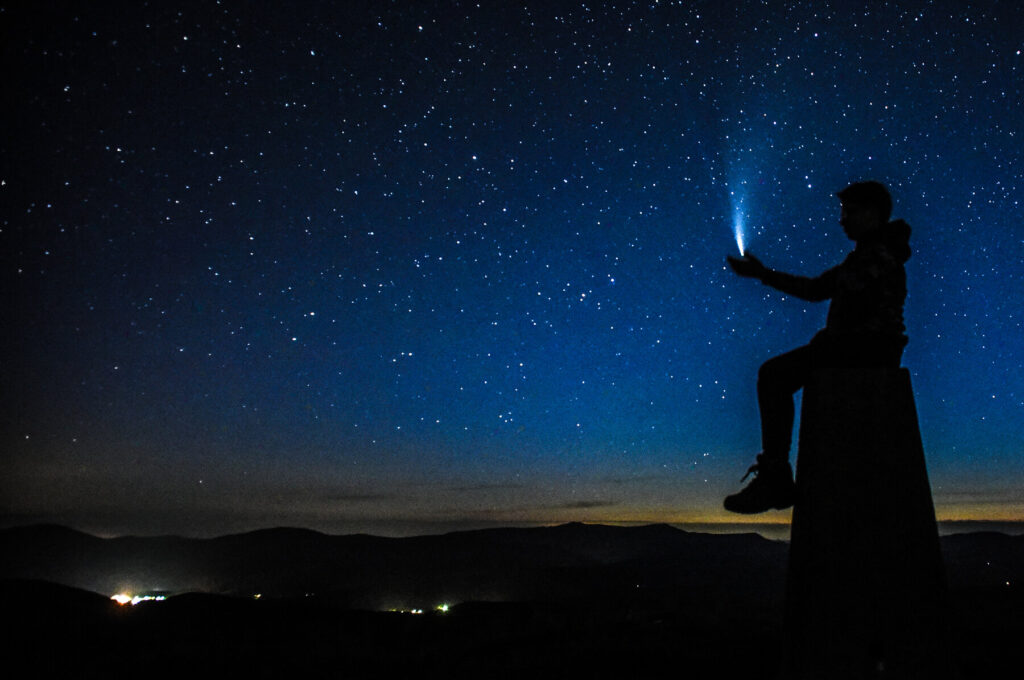
The dangers of going out at night can be minimised, of course. Visit your stargazing venues by day, familiarise yourself with the terrain, and have a word with any nearby neighbours and landowners, letting them know of your impending midnight manoeuvres. Of course, there are some perils that offer no warning, just like a shooting star that appears in the corner of your vision when you’re not quite ready. Take the time I took my 10-year-old daughter stargazing for the first time. There we were, setting up our equipment on top of a nearby hill, far from sparkly streetlights, and using industry-approved red lights on our heads (red lights help with night vision). After nearly an hour of setting up, and just after midnight, a police car appears on site. They were investigating reports of UFO sightings above the town.
Explanation: ‘We’re up here to watch the Perseids meteor shower, officer, why don’t you step outside the vehicle to see?’
Officer: ‘Oh, so sorry for disturbing your stargazing, but we’d had phone calls from distressed community members that they were seeing unexplainable red lights in the night sky and they were kind of concerned.’
The officer stepped out of his vehicle and instantly saw an amazing meteor; he messaged base saying there were no UFOs, just local stargazers waiting for shooting stars to appear.
Cambrian Mountains accommodation providers are taking advantage of the increased interest in the night skies, too. There’s a whole galaxy of places to stay: you might be looking for a traditional B&B, or wanting to try a self-catering unit or even an increasingly popular camping or glamping site. Either way, it’s extremely possible that these will be located in very dark places, where you can step out at night and appreciate the wonder of the night sky. Many accommodations also provide stargazing activities for their guests, using safe and well-run events offered by organisations such as Dark Sky Wales. Others provide dark sky welcome packs including binoculars, planispheres and blankets. Actually, all you really need to enjoy the dark skies of the Cambrian Mountains is a warm Welsh blanket and a flask of hot tea.
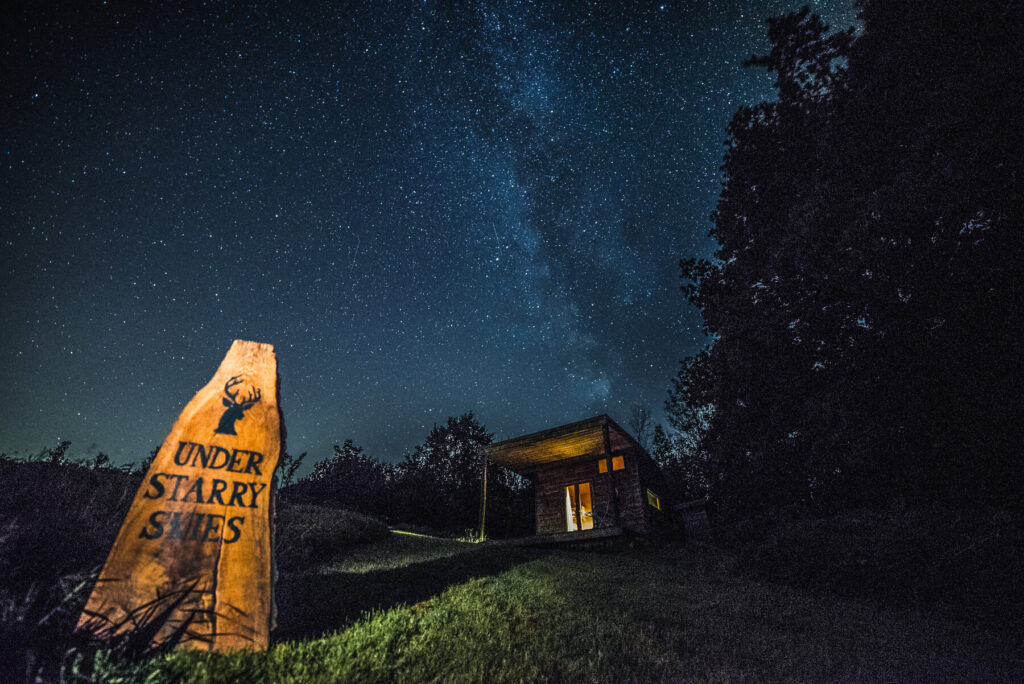
On the topic of tea, even local food and drink producers hope to benefit from the cosmic Cambrian Mountains. Coming to market will be a dark skies rum, a triple pack of dark-skies-inspired chocolate bars, as well as a jammy dark sky preserve. Plus, a specially blended tea, reputed to be able to keep you up well into the early hours.
Heading into the mountains at night is an awesome experience. While many come home from work, park up the car, and close the door behind them, for night-time photographers and stargazers, the onset of darkness offers further opportunities to prolong the enjoyment of life. A chance to make the most of living and take advantage of as many of the 24 hours given to us by the trusted rotation of the earth. In fact, there are many enthusiasts of the night sky who will swear that more can be seen by night than by day!
If you’re looking to head out for the first time, I recommend downloading a few apps to that enable you to identify what’s in the night sky, especially Photopills and Stellarium. Whether you want to know which planet you’re looking at, or want some help with planning when and where to find the Milky Way, they will allow you to discover more about the heavens above, and appreciate how small a part our world plays in the grand scheme of things. Download one of many weather apps too, just in case. Aside from that, look out for our neighbouring satellite, the moon, familiarise yourself with Ursa Major (The Plough), and wait patiently for that special moment when a shooting star darts across the speckled night sky.
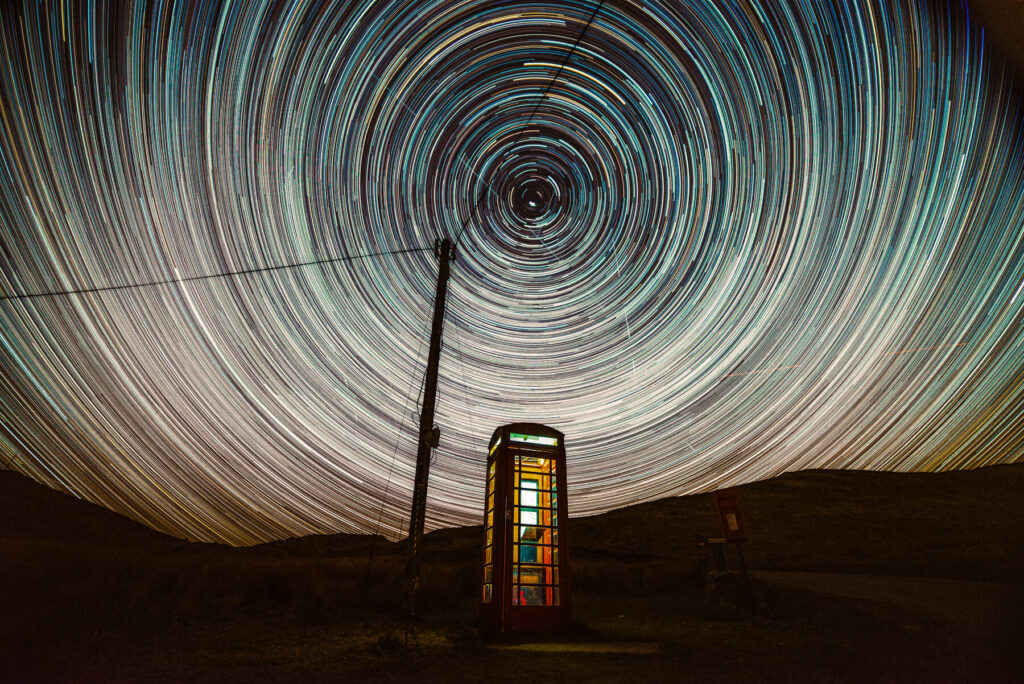
If you have a DSLR camera, a tripod and a remote control, have a go at taking an image of the night sky. There are plenty of tutorials on YouTube, and once you’ve got to grips with the camera’s settings, you’ll be chuffed to bits with your first ‘astro-photo’. Likewise, have a go at taking an image with your phone. Today’s generation of smartphones offers increased technology and capability, and can adapt well to low-light conditions. Use #cambrianmountainsdarkskies when posting on Instagram.
Technology aside, I’m pretty sure that my adventures into night-time landscapes have impacted positively on my wellbeing. Seeing the constellations, planets and Milky Way with a cool breeze on my cheeks is always an invigorating experience.
The Cambrian Mountains really is an area of astounding natural beauty, both by day and by night. All I ask is that you visit responsibly and respect the local communities and natural environment. Here’s wishing you a happy, safe, and memorable visit, and of course: bright eyes and clear skies.
More information
For more information on the Cambrian Mountains dark skies and other stargazing spots in Britain and Ireland, check out Tiffany Francis-Baker’s guide:
